Why Media Choice Matters — and Why You Should Care
If you’re building an AP 2‑D Art and Design portfolio, every material decision you make is also a thinking decision. Choosing between digital methods, photography, and mixed media isn’t just about what looks cool on Instagram; it’s about how those choices help you demonstrate the exact skills the AP rubric is looking for—skills like synthesis, experimentation, refinement, and the meaningful use of 2‑D elements and principles.
This guide walks you through practical ways to select, develop, and document work in three common 2‑D approaches—Digital, Photo, and Mixed Media—so your Sustained Investigation and Selected Works align tightly with scoring expectations. Expect examples, side‑by‑side comparisons, a helpful table to visualize tradeoffs, and a few study‑planning suggestions (including how Sparkl’s personalized tutoring can support one‑on‑one guidance and tailored study plans when you want focused feedback).
Big Picture: The Rubric Wants Investigation, Not Just Polished Pieces
The AP 2‑D rubric emphasizes two main sections: Sustained Investigation (60%) and Selected Works (40%). That means most of your credit comes from a body of work that shows a developing, reflective inquiry over time, paired with clear written evidence. Selected Works rewards discrete pieces that showcase 2‑D skills and synthesis. Both sections reward intentionality: clear conceptual direction, methodical experimentation, and evidence of revision.
So when choosing a media approach, ask: Will my media let me explore, revise, and push an idea so that it deepens? If yes—that could be the right media. If no, reconsider.
How the Three Media Routes Map to Rubric Strengths
- Digital (vector, raster, collage, digital painting, layout): Great for iteration, layering ideas quickly, and documenting process steps—ideal for showing development and revisions.
- Photography: Strong when conceptually framed—photography can record staged series, documentary sequences, and manipulated images; it’s powerful for narrative investigations and exploring figure/ground, composition, and contrast.
- Mixed Media (photo + paint + collage + textiles): Fantastic for demonstrating synthesis of materials and processes; shows multiplicity of technique and a tactile relationship to 2‑D surfaces.
Digital Media: Flexibility, Versioning, and Intentional Design
Digital tools open enormous possibilities for iterative exploration. Because you can duplicate, edit, and layer without destroying earlier decisions, digital practice naturally builds evidence of experimentation and revision—core rubric elements.
Benefits for the Rubric
- Version history: Multiple drafts and intermediate files show sustained investigation.
- Layering and compositing: Demonstrates synthesis of elements (color, shape, texture) in a controlled, visible way.
- Scalability: Vector work and high‑resolution images translate well for Selected Works images.
Common Pitfalls and How to Avoid Them
- Too pristine, not enough process: Save and present intermediate stages—show failed experiments as learning moments.
- Overreliance on filters: Explain why a digital effect is used; show trials without the effect to demonstrate decision making.
- Poor documentation: Use screenshots, time‑stamped exports, and brief written notes to make development visible in your Sustained Investigation Written Evidence.
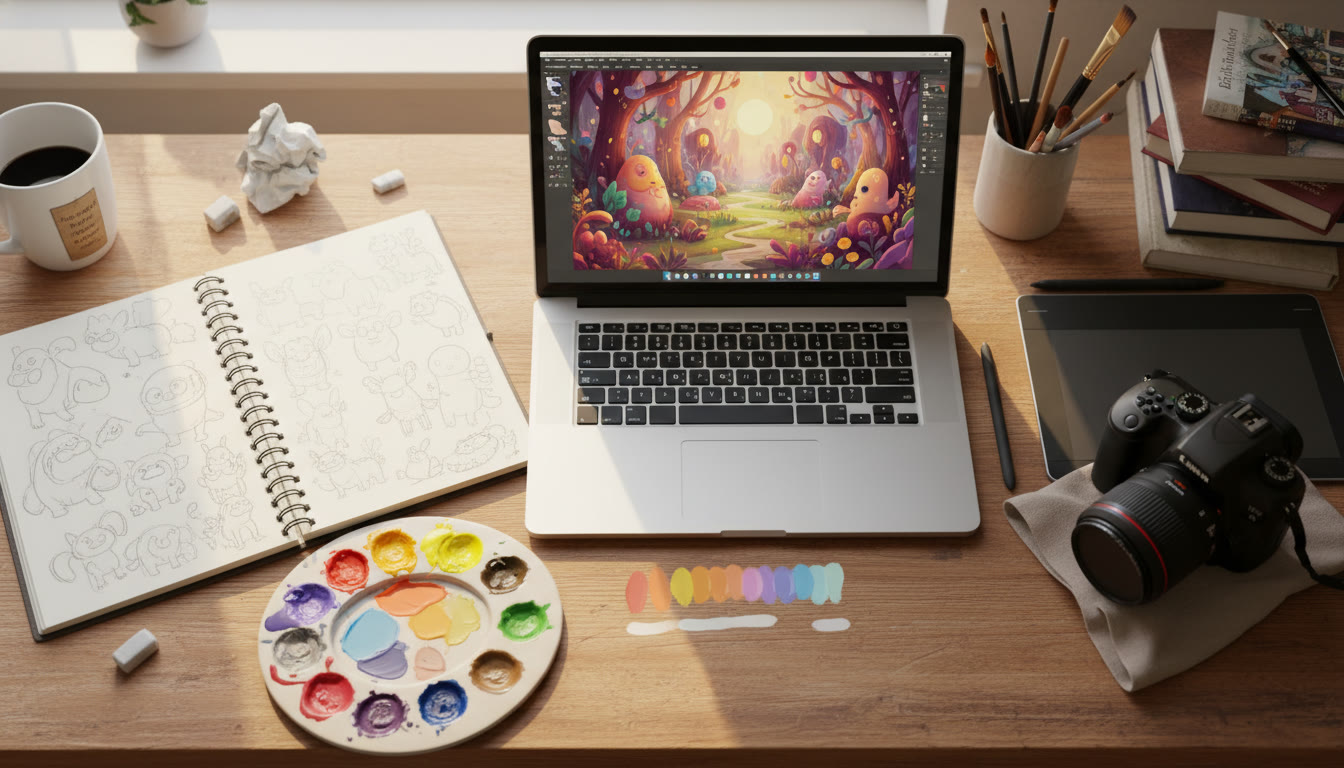
Practical Workflow Example
Project theme: “Urban Patterns”
- Week 1: Photographic reference gathering—stair rails, sidewalk cracks, storefront signage.
- Week 2: Thumbnails in sketchbook—compositional experiments (5–10 variants).
- Week 3: Digital collages—import photos into layered PSD or Procreate file, test color harmonies in multiple iterations, export intermediate PNGs documenting development.
- Week 4: Refinement into final Selected Works—vector cleanups for sharp typography and edge work; export high‑res images and write process statements tying choices to design principles.
Photography: Light, Concept, and Narrative Control
Photography can function as pure documentation or as a conceptual medium. For AP 2‑D, photographs that are conceptually driven—where each shot is part of an inquiry—score better than snapshots. Use photography to investigate a motif, control composition, and explore two‑dimensional relationships like figure/ground, balance, and rhythm.
How to Make Photography Rubric‑Friendly
- Create series: A sequence of images indexed to a research question (how does shadow simplify form?) demonstrates sustained investigation.
- Process evidence: Keep contact sheets, lighting diagrams, staging notes, and editing iterations to show your process.
- Experiment with in‑camera and post‑process techniques: contrast long exposure, double exposure, printing alternatives, or darkroom processes—document what you tried and why.
Practical Project Example
Project theme: “Thresholds” (exploring entrances, doors, and transitions)
- Research: Gather historical and cultural images of thresholds; write a short inquiry question.
- Shoot: Shoot at different times and viewpoints to explore silhouette, texture, and scale.
- Edit: Produce three editing passes—raw, cropped composition test, and high‑contrast interpretive version—saving each pass as evidence of revision.
- Selected Works: Choose images that show formal diversity and conceptual cohesion; write captions that link back to your investigation and to specific 2‑D elements.
Mixed Media: The Rubric’s Love Language for Synthesis
When the rubric highlights synthesis of materials, processes, and ideas, mixed media can be your strongest ally. Combining photography with painting, collage, printmaking, or textiles shows a command of multiple processes and the ability to unify them into a coherent visual language.
Best Practices
- Plan how each material contributes to concept—don’t add materials for decoration alone.
- Document process steps photographically and through short reflections—before/after states, materials lists, and failed experiments are valuable evidence.
- Consider texture and surface: how does paper, fabric, or found material alter light, scale, and color relationships?
Project Example
Project theme: “Memory Layers”
- Collect: Old letters, printed photos, fabric scraps.
- Experiment: Scan photos, print on different paper types, paint over sections, stitch fabric, layer translucent papers.
- Refine: Choose a final set of works that show progressive decisions—color muted over time, fragments concealed and revealed, text partially legible.
- Written Evidence: Your inquiry should discuss how each material altered meaning and formal properties, with citations of visual sources where needed.
Comparing the Three: A Practical Table for Decision Making
Use this short table to evaluate which approach suits your concept, timeline, and access to resources.
| Criteria | Digital | Photography | Mixed Media |
|---|---|---|---|
| Best for Iteration | Excellent (easy versioning) | Good (many shoots, many edits) | Moderate (physical rework can be slow) |
| Shows Material Synthesis | Moderate (can simulate materials) | Low to Moderate (can be combined with printing) | Excellent (real materials interact physically) |
| Ease of Documentation | Excellent (export in stages) | Excellent (contact sheets, RAW files) | Good (requires photos of stages) |
| Technical Resource Needs | Software, tablet, computer | Camera, lighting, editing tools | Varied studio materials |
| Rubric Strength | Strong for revision and synthesis of design elements | Strong for composition and narrative investigation | Strongest for material synthesis and layered processes |
Writing the Sustained Investigation: Make Your Process Speak
Images alone don’t carry the full weight of the rubric. Your Sustained Investigation Written Evidence must clearly state your inquiry, show development through practice and revision, and explain decisions. Think of the written evidence as the curator’s voice for your work: it should make the unseen choices visible.
Quick Structure for Strong Written Evidence
- Inquiry Statement (1–2 concise sentences): What question or problem guided your work?
- Process Summary (3–6 short paragraphs or bullet sections): How did you investigate—materials, steps, experiments, key turning points?
- Revision Evidence (bulleted list or mini timeline): Show concrete examples of how pieces changed—what you discarded and why.
- Reflection (closing paragraph): What did you learn about the idea, the materials, and your own practice?
Choosing Works for the Selected Works Section
Selected Works should be pieces that best demonstrate your 2‑D skills and synthesis. They can come from your Sustained Investigation but don’t have to. When selecting, think variety and clarity: choose pieces that together reveal your range in composition, color/value, technique, and conceptual depth.
Checklist Before You Submit
- Do the images show the formal elements the rubric calls out (line, shape, color, plane, space, texture)?
- Is the composition readable at the size it will be viewed? (Crop test thumbnails to check.)
- Do written statements succinctly connect the work to your inquiry and methods?
- Have you documented development stages so Sustained Investigation graders can see growth?
Common Student Questions Answered
Can I mix digital and analog in the same portfolio?
Yes—mixing is not only allowed, it’s often powerful. The rubric rewards synthesis. If you combine photography with digital collage or paint over prints, explain why you made those mixes and how each material contributes to concept and form.
How many experiments should I show?
Quality over quantity. A few well‑documented experiments that show clear learning and pivot points are better than many random trials. Show where your work changed because of an experiment and explain why.
Does the rubric prefer complex materials?
No. The rubric prefers evidence of investigation and synthesis—this can happen with simple materials if used inventively. A smartphone photograph plus careful staging and a series of edits can score highly if it demonstrates depth and development.
Time Management and Portfolio Planning
Start early and plan backwards from the AP submission deadline. Break your year into research, experimentation, revision, and finalization phases. Use a calendar with mini‑deadlines: one for a complete set of reference images, one for first‑round experiments, and one for finalized Selected Works.
Sample Timeline (Academic Year)
- September–October: Research and ideation; build a reference folder; write initial inquiry statement.
- November–January: Focused experiments and documentation; schedule weekly progress reviews.
- February–March: Synthesize findings into stronger pieces; make substantive revisions based on feedback.
- April: Finalize Selected Works and polish written evidence; prepare high‑quality images for upload.
- Early May: Complete AP Digital Portfolio submission and double‑check image quality and text clarity.
How to Use Feedback Effectively
Feedback is most useful when specific. Ask reviewers to comment on composition, use of 2‑D elements, conceptual clarity, and whether your written evidence convincingly ties process to outcome. If you want targeted, regular critiques, consider one‑on‑one coaching—Sparkl’s personalized tutoring, with expert tutors and tailored study plans, can help structure review cycles and offer concrete revisions that map directly to rubric expectations.
Submission Tips and Technical Details
Make sure images are high resolution, accurately color‑balanced, and cropped to show the work clearly. Label files consistently, and include process images for Sustained Investigation where needed. Follow the AP Digital Portfolio instructions for file types and naming conventions—late or incorrectly formatted submissions are a risk you can avoid with careful checks.
Final Prep Checklist
- All files uploaded and named correctly.
- Written evidence complete and concise.
- Process images show clear development and are easy to follow.
- Selected Works demonstrate range and technical skill.
- Backups made—cloud and local copies.
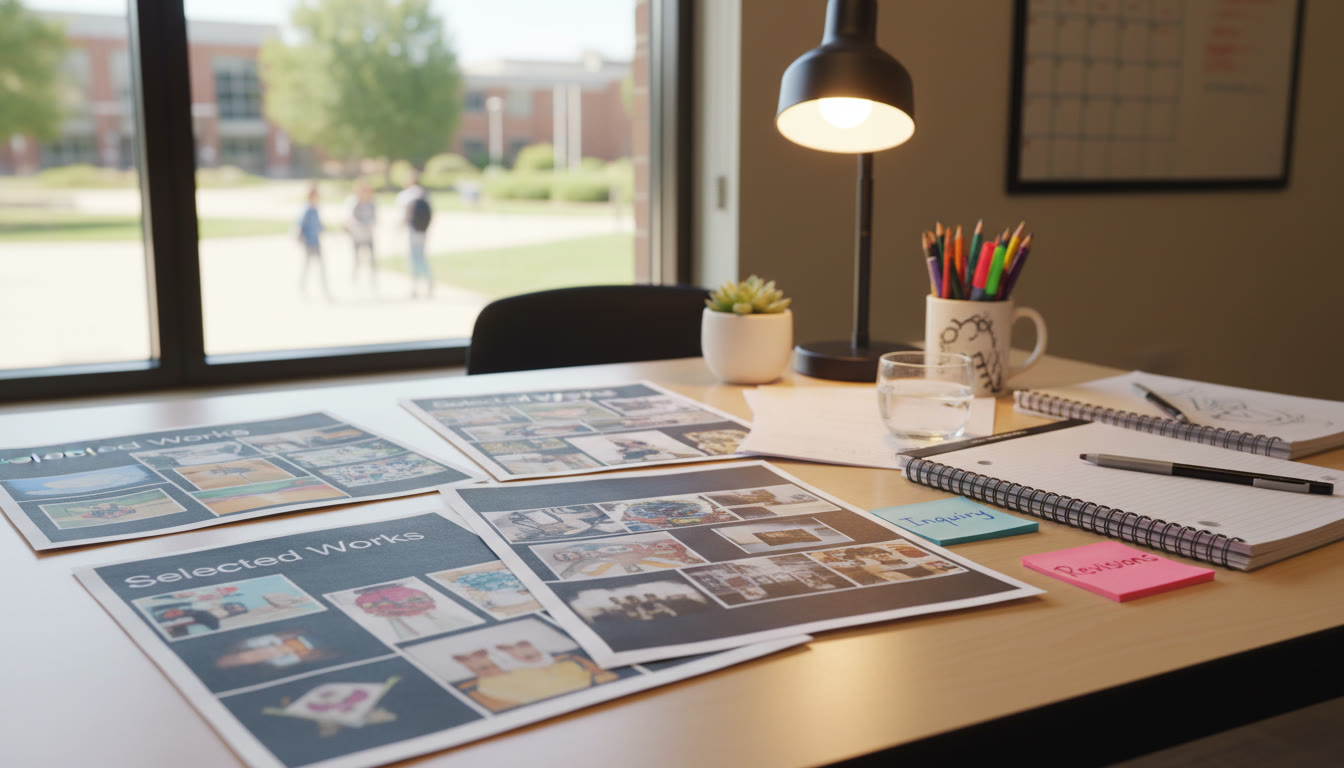
Realistic Examples to Spark Ideas
Below are two short case studies that show how different media choices can meet rubric priorities.
Case Study A — Digital Synthesis: “Signal Patterns”
Student uses found signage photos and hand‑drawn pattern scans. Through iterative digital collage they explore contrast and hierarchy. Documentation includes PDFs of layered files, thumbnails of layout variants, and written reflections tying each change to formal goals. Selected Works include a high‑resolution poster design and a series of cropped studies that show mastery of both composition and color value.
Case Study B — Mixed Media: “Tactile Maps”
Student combines printed satellite imagery, stitched overlays, and painted transparencies. They photograph stages of adhesion, paint tests, and failed color mixes as process evidence. The final Selected Works are textured panels that speak to the same inquiry (how memory overlays geography). Written evidence explicitly describes material choices and how each material shifted meaning.
Wrapping Up: Make Choices That Let the Rubric See Your Thinking
The smartest media choice is the one that best lets you investigate an idea over time, show meaningful revisions, and synthesize materials and processes to produce clear, expressive 2‑D work. Whether you lean into digital flexibility, photographic storytelling, or the tactile complexity of mixed media, keep process documentation and clear written evidence central to your practice.
If you want regular, targeted feedback, consider connecting with an expert who can tailor critiques and help you structure your portfolio work. Personalized tutoring—like the one Sparkl offers with 1‑on‑1 guidance, tailored study plans, and expert tutors—can help turn messy experiments into strong evidence for your Sustained Investigation.
Final Tips — A Short Checklist Before You Press Submit
- Your inquiry is clear and concise.
- You have documented key experiments and revisions.
- Your Selected Works show range and synthesis.
- Written evidence connects materials and process to ideas.
- All files meet technical specs and are backed up.
- Ask for at least one outside review—and act on it.
Go Make Work That Shows Who You Are
AP portfolios aren’t about proving you can copy a style—they’re about showing who you are as a thinker and maker. Choose media that let your questions breathe, and then document the answer. Keep pushing, revising, and reflecting—those are the exact behaviors the AP rubric rewards. And if you want structured help along the way, remember that one‑on‑one tutoring and tailored study plans can make the difference between a good portfolio and a submission that truly resonates.
Good luck—create boldly, document deliberately, and let the work show your intellectual curiosity.

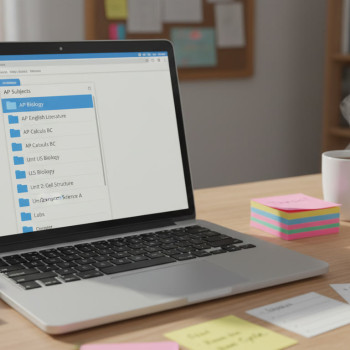
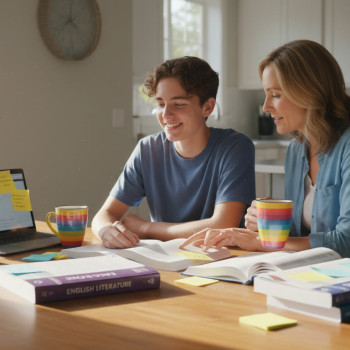

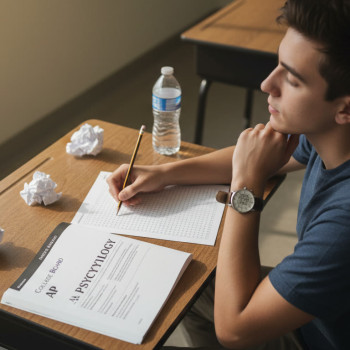


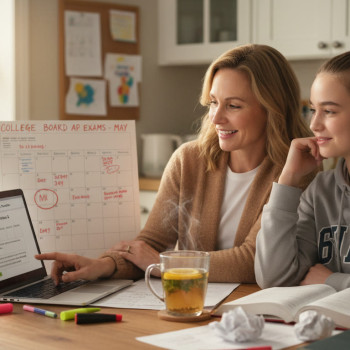








No Comments
Leave a comment Cancel